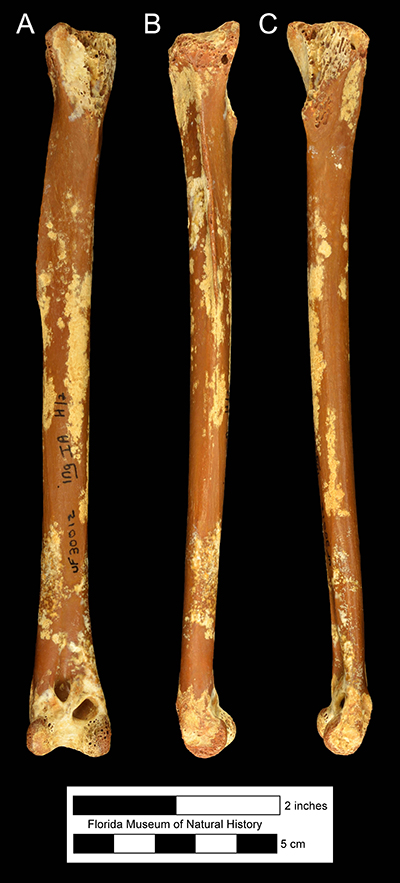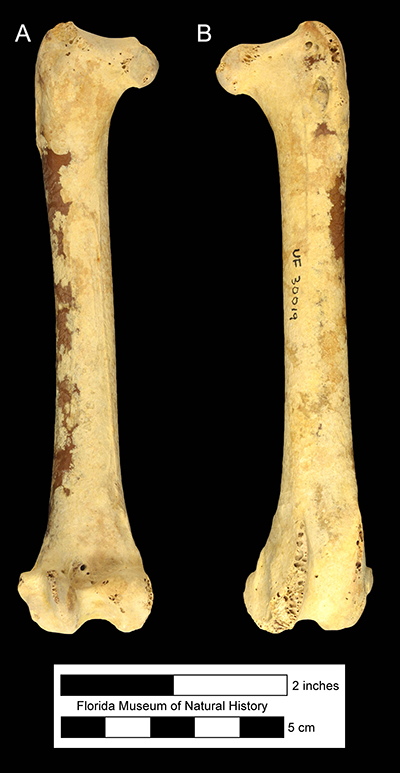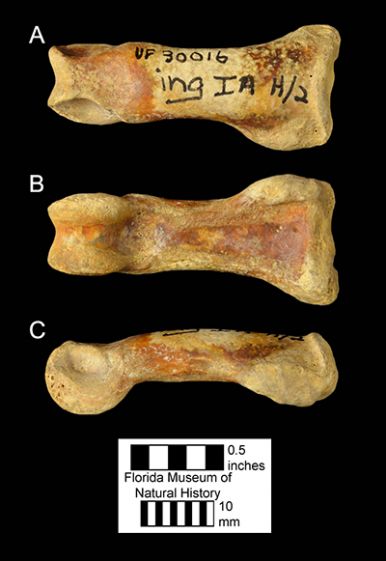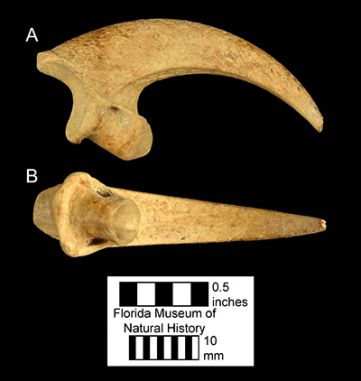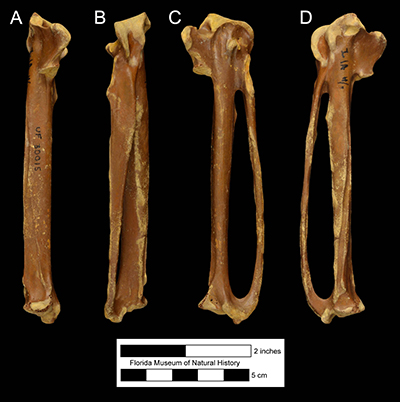Aquila bivia
Quick Facts
Common Name: none
Fossils of Aquila bivia have been found only in two widely separated localities, Florida and Arizona.
The extinct Aquila bivia was a large eagle, most similar to the modern golden eagle (Aquila chrysaetos) but somewhat larger.
There are 38 total specimens of Aquila bivia in the Florida Museum of Natural History’s collection, all from one locality. Oddly, specimens have not been found at other Florida fossil sites of similar age with abundant birds.
Age Range
- Early Pleistocene Epoch; latest Blancan land mammal age
- About 1.7 to 1.6 million years ago
Scientific Name and Classification
Aquila bivia Emslie & Czaplewski, 1999
Source of Species Name: from the Latin word bivius meaning ‘two-wayed’, which refers to the distribution of the fossil specimens in both Florida and Arizona (Emslie and Czaplewski, 1999).
Classification: Aves, Neornithes, Neognathae, Neoaves, Accipitriformes, Accipitridae
Alternate Scientific Names: none.

Overall Geographic Range
Fossils of Aquila bivia are currently known only from two widely separated localities, Inglis 1A in Citrus County, Florida and 111 Ranch in Graham County, Arizona. The type locality is Inglis 1A in Citrus County, Florida.
Florida Fossil Occurrences
Florida fossil sites with Aquila bivia:
- Citrus County—Inglis 1A
Discussion
Today only a single species of eagle lives in Florida, the bald eagle, Haliaeetus leucocephalus. At least four genera comprising about 8 different species of eagles lived in the state during the Pleistocene. In addition to the bald eagle, there are two known species of Buteogallus, three species of Amplibuteo, and two species of Aquila, the golden eagle (Carr, 1981; Emslie, 1995; 1998). The extinct Aquila bivia was a large eagle, most similar to the modern golden eagle, Aquila chrysaetos, but about 10% to 15% larger. However, the leg bones of Aquila bivia are more slender than the more robust limbs of Aquila chrysaetos (Figs. 2-3).
Overall, there are 38 total specimens of Aquila bivia in the Florida Museum of Natural History collection from Inglis 1A. Oddly, it has not been found at other Florida fossil sites of similar age with abundant birds, such as Haile 7C and Macasphalt Shell Pit (Emslie, 1998). It is possible that its presence at Inglis 1A represents a short-lived range extension from western North America (Morgan and Emslie, 2010). Aquila bivia was first informally recognized by Carr (1981), in her Master’s thesis on the fossil birds from Inglis 1A.
Sources
- Original Author(s): Rachel E. Narducci
- Original Completion Date: December 7, 2012
- Editor(s) Name(s): Richard C. Hulbert Jr. and Natali Valdes
- Last Updated On: February 25, 2015
This material is based upon work supported by the National Science Foundation under Grant Number CSBR 1203222, Jonathan Bloch, Principal Investigator. Any opinions, findings, and conclusions or recommendations expressed in this material are those of the author(s) and do not necessarily reflect the views of the National Science Foundation.
Copyright © Florida Museum of Natural History, University of Florida
